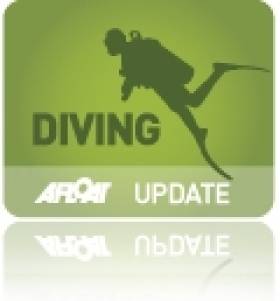Displaying items by tag: underwater
New Irish Language TV Series Unlocks Secrets of Ireland's Marine Environment
Ireland’s unexplored 220-million-acre marine environment will be revealed in a landmark new TV series which began last week.
As previously reported on Afloat.ie, Farraigí na hÉireann (Seas of Ireland) is a new six-part Irish-language series on Ireland's marine wildlife, which aired its first episode on TG4 last Tuesday 20 September.
Irish Film and Television News interviewed series co-creator Ken O'Sullivan about the unique series, which is the first of its kind in Ireland in unlocking the secrets of the abundant wildlife in the seas around our coast.
“We tried to combine coastal heritage with wildlife,” said O'Sullivan on the intentions behind the series. “We want to show how ancient coastal communities connected with wildlife.
"As filmmakers, our approach is that we try not to use science as the beginning and end of the story. We like to look at people’s connection with these natural worlds.”
As such, the series does not have a presenter, but its story is told through its contributors.
“We have passionate marine biologists and we have small fishermen, from places like the Aran Islands and Kerry, reflecting about their time at sea and how they relate to the sea, to try and convey the story.
"Hopefully, all these contributors bring a narrative to the unique underwater photography.”
And it's this underwater imagery that's surely the star of the show. As much as 70% of the series was filmed under the surface over the course of a year in locations around the country, using cameras in a special water-tight housing.
Deep water footage was also captured by high-definition cameras on an unmanned submarine, giving us the best ever view of life in the depths.
Farraigí na hÉireann can be seen Tuesdays at 8pm on TG4, with repeats on Sundays at 9pm.

























































